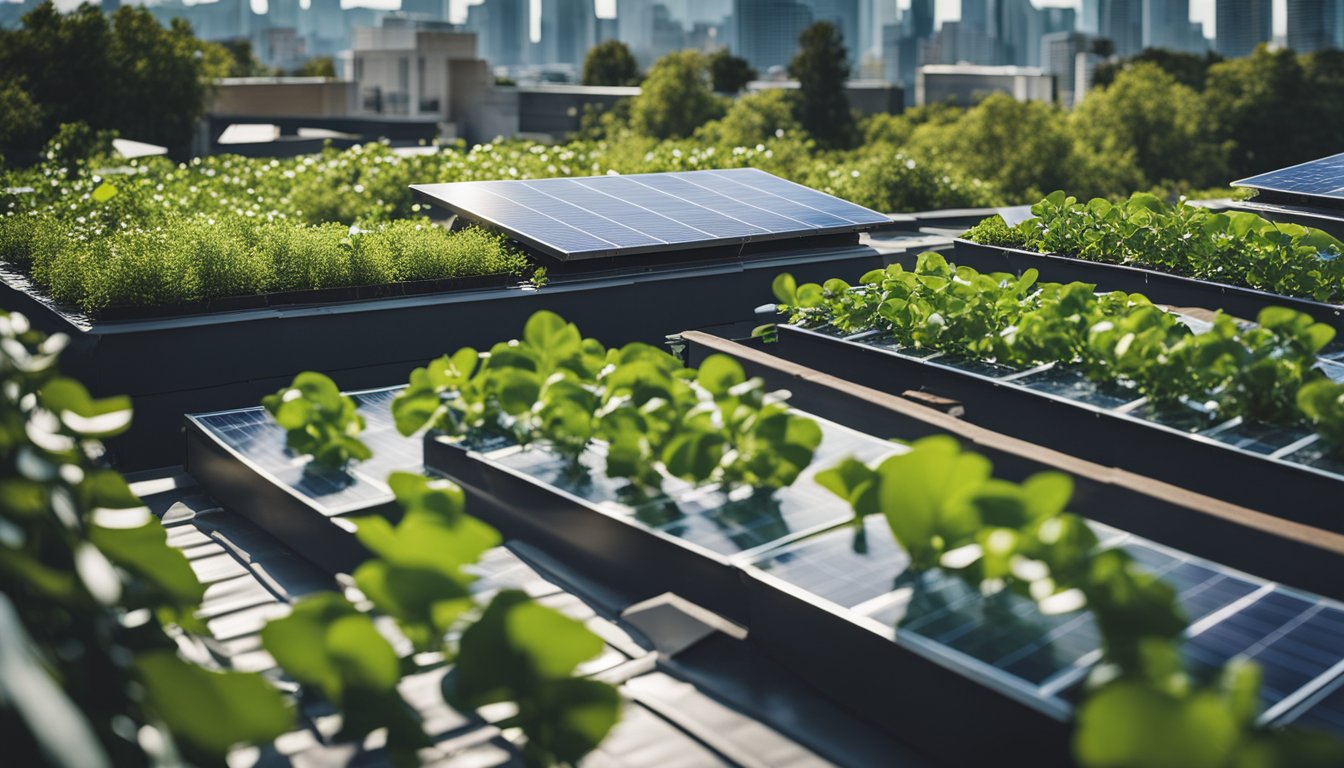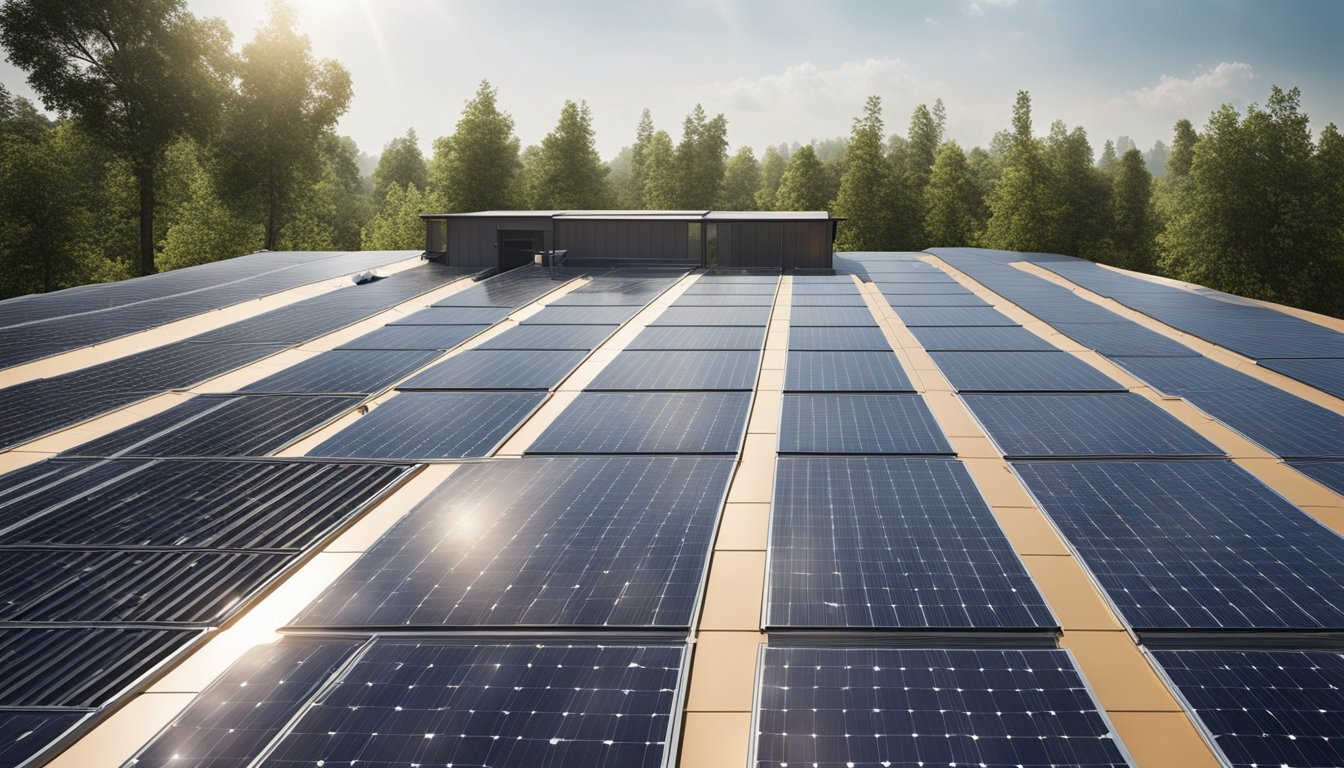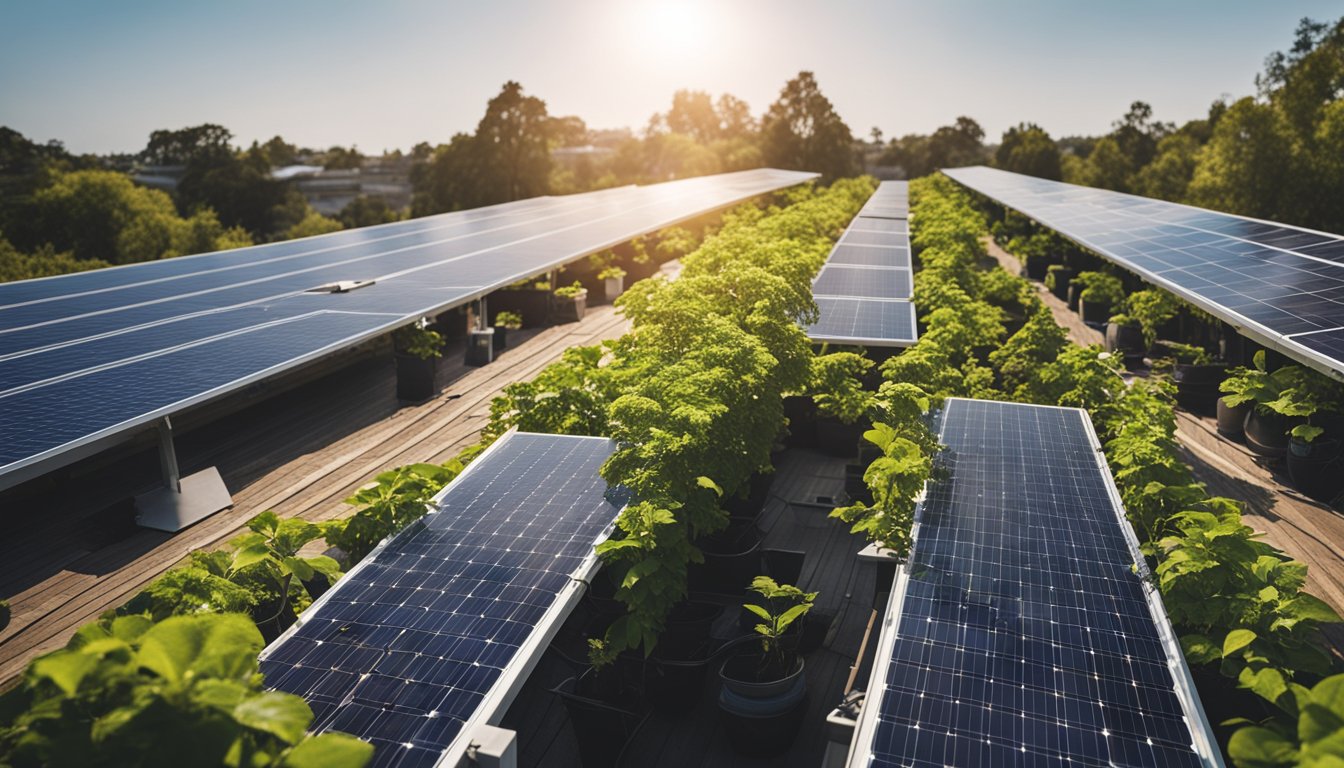Late updated: 10 Feb 2025 14:02
Written by: Oliver Bennett
Sustainable Alternatives For UK Roof Renovations: Eco-Friendly Solutions
Sustainable roofing solutions are increasingly capturing the attention of UK homeowners seeking to improve their energy efficiency and environmental responsibility. The roofing industry is witnessing a shift towards green alternatives, as more people recognise the impact of traditional roofing on energy consumption and carbon emissions. Whether you're renovating or building anew, eco-friendly materials provide an opportunity to align with these values without compromising on quality or longevity.

By integrating sustainable materials such as recycled options, green roofs, or roof-integrated photovoltaics, we can achieve energy-efficient homes that blend seamlessly with our surroundings. For instance, the use of bamboo as a roofing material showcases not only its rapid growth and strength but also its capacity to contribute positively to sustainable architecture. Moreover, choices like ethylene propylene diene monomer (EPDM) rubber roofs bring long-lasting benefits, highlighting the possibility of achieving environmentally friendly solutions without sacrificing durability.
Adopting sustainable roofing methods is more than a trend—it’s a cornerstone for future-proofing our homes and reducing our environmental footprint. Exploring these alternatives demonstrates not just an understanding of innovation but a commitment to a greener lifestyle. Ready to embark on this journey, we are here to guide you through the numerous options available, ensuring that your roof renovation is not only sustainable but a savvy investment.
Key Takeaways
- Sustainable roofs enhance energy efficiency in UK homes.
- Eco-friendly materials offer both environmental and durability benefits.
- Green roofing helps reduce carbon footprint impacts.
Sustainable Roofing Materials and Technologies
Our exploration into sustainable roofing materials and technologies spotlights innovations aimed at enhancing energy efficiency, promoting environmental responsibility, and providing durability. We delve into how these advancements contribute to building lifecycle efficiency and urban beauty.
Green and Living Roofs
Green roofs, or living roofs, offer a unique blend of aesthetics and functional benefits. These systems incorporate vegetation layers that enhance biodiversity and reduce the urban heat island effect. They provide superior thermal insulation, which can significantly lower energy consumption for heating and cooling. Additionally, green roofs manage stormwater runoff effectively, reducing flooding risks. Their appeal lies not just in environmental benefits but also in extending roof lifespan due to protection from UV rays and temperature fluctuations.
Innovative Insulation Options
In insulation, sustainable solutions are tailored for maximal energy efficiency. Materials like sheep’s wool, cork, and cellulose offer excellent thermal insulation properties. They provide not only a decrease in heating costs but also contribute to indoor climate comfort. These materials are renewable and biodegradable, which aligns with sustainability goals. Equipped to enhance durability, these options are pivotal for reducing a building’s overall carbon footprint during its lifecycle.
Advancements in Solar Roofing
Solar roofing technology has seen remarkable innovation, making renewable energy more accessible. Integrated solar panels can now be seamlessly combined with traditional roofing materials, providing clean energy without compromising aesthetics. This advancement turns roofs into energy-generating platforms, contributing to sustainability by reducing reliance on fossil fuels. The efficiency of these solar panels continues to improve, offering homeowners tangible energy savings while supporting renewable energy adoption.
Recycled and Eco-Friendly Materials
The push for recycled and eco-friendly roofing materials has spurred innovation in the sector. Materials such as reclaimed wood, rubber, and metal not only reduce waste but also offer longevity and robustness. These substances are often more durable than conventional options and can withstand environmental stressors effectively. By opting for such materials, we support a circular economy and contribute to waste reduction in construction and demolition processes. Recycled roofing fits seamlessly into modern building designs and sustainability models, providing both functional and ecological advantages.
Design and Performance Considerations

In sustainable roof renovations, design and performance are paramount. Our focus includes energy efficiency, water management, and thermal performance. These elements are not only essential for environmental impact reduction but also for cost savings and improved comfort.
Energy Consumption and Efficiency
Energy-efficient roofing plays a critical role in sustainability by reducing energy consumption and lowering energy costs. Cool roofs and solar tiles are prominent options, reflecting solar heat and enhancing thermal emittance. Integrating solar panels into our designs can result in significant energy savings by generating electricity efficiently.
Choosing materials with high solar reflectance contributes to the reduction of greenhouse gas emissions. By improving energy efficiency, we can decrease the overall carbon footprint of buildings, promoting a more sustainable future.
Water Management and Drainage
Proper water management in roofing systems is essential for sustainability. Advanced drainage systems are necessary to prevent water accumulation, particularly in urban settings where stormwater management is vital. Green roofs, with their living plants, offer a natural way to absorb rainwater, reducing runoff and easing the burden on drainage systems.
Implementing these solutions supports a balanced ecosystem and increases biodiversity. By enhancing water retention and slowing runoff, we contribute to effective water management, which is crucial for mitigating flood risks and protecting urban environments.
Thermal Performance and Climate Impact
Thermal performance is a crucial element of sustainable roofing. Improving thermal efficiency helps regulate building temperatures, thus lowering energy requirements for heating and cooling. Insulated roofing systems enhance this efficiency, whilst green roofs provide natural insulation, contributing to the reduction of the urban heat island effect.
By prioritising materials that optimise thermal performance, we can minimise the climate impact of buildings. This approach not only boosts energy efficiency but also reduces greenhouse gas emissions, aligning with our commitment to sustainable and climate-conscious roofing solutions.
Frequently Asked Questions

In the pursuit of sustainable roof renovations in the UK, energy-efficient materials, the role of green roofs, government grants, and the cost benefits of solar panels are key considerations. Let's explore these areas to better understand their impact on sustainability and cost-effectiveness.
What are the most energy-efficient materials to use for roof renovations in the UK?
When considering energy-efficient materials for roof renovations, we often look at metal roofs and eco rubber roofing like EPDM. These options are prized for their durability and energy efficiency. Metal roofs reflect sunlight, reducing cooling costs, whilst EPDM boasts a long lifespan, which means fewer replacements and less waste.
How can green roofs contribute to the sustainability of a building's renovation?
Green roofs offer remarkable benefits, such as improving air quality and managing stormwater. They provide natural insulation, which can lead to reduced energy costs. Moreover, by increasing biodiversity and reducing heat island effects, they make urban environments more sustainable.
What government grants are available for incorporating sustainable features in roof renovations?
In the UK, several government grants and incentives can support sustainable roof renovations. Programmes may vary but generally aim to reduce carbon emissions and promote energy efficiency. It's essential for us to keep abreast of available schemes to maximise potential benefits.
How does the use of recycled materials in roof renovations impact the overall sustainability of the project?
Incorporating recycled materials into roof renovations significantly enhances sustainability by reducing waste and conserving resources. Recycled shingles or metal roofs are examples that lower the demand for new raw materials. This practice supports a circular economy and helps in decreasing the environmental impact of construction.
What are the long-term cost benefits of installing solar panels on my roof during renovation works?
Solar panels can significantly lower electricity bills by generating renewable energy. The initial investment might be substantial, but long-term savings and potential earnings from selling surplus power can be rewarding. Additionally, government incentives further enhance the financial advantages over time.
Can you explain the advantages of choosing a cool roof system for a residential property in the UK?
Cool roof systems are designed to reflect more sunlight and absorb less heat. This can help in keeping homes cooler in warmer months, reducing the need for air conditioning and boosting energy savings. Their capability to enhance a building's energy efficiency aligns well with sustainable renovation goals.
